I found this cabinet card portrait for sale on eBay in England (Northamptonshire) in January of this year. Books are common props in 19th-century studio portraits, but titles are usually too blurry to read, even after scanning them at high resolution. In this case, the book is large enough that the title is easily readable at low magnification: Uncle Tom’s Cabin, the novel by American abolitionist Harriet Beecher Stowe.

Neither the young woman holding the book nor the photographer is identified, so we have no way to know where the photo was taken. Two questions come to mind. First, was the portrait made in the United Kingdom, or was it made in the United States? Second, was the book just a studio prop, or did the young woman pose with it because it had personal significance for her?
Uncle Tom’s Cabin first appeared in serial form, in an abolitionist periodical, in June 1851. The first edition in book form was published in March 1852, followed by many editions in later decades. I spent hours trying to determine the exact edition in the portrait, with the idea that it might help to date the photo, but I didn’t succeed. I think the photo was taken in the mid-to-late 1890s, based on the young woman’s hairstyle and her style of dress, particularly her loose sleeves.
Wikipedia says the following about Uncle Tom’s Cabin. I’ve highlighted two sentences in the third paragraph:
Uncle Tom’s Cabin; or, Life Among the Lowly is an anti-slavery novel by American author Harriet Beecher Stowe. Published in 1852, the novel had a profound effect on attitudes toward African Americans and slavery in the U.S. and is said to have “helped lay the groundwork for the Civil War.”
Stowe, a Connecticut-born teacher at the Hartford Female Seminary and an active abolitionist, featured the character of Uncle Tom, a long-suffering black slave around whom the stories of other characters revolve. The sentimental novel depicts the reality of slavery while also asserting that Christian love can overcome something as destructive as enslavement of fellow human beings.
Uncle Tom’s Cabin was the best-selling novel of the 19th century and the second best-selling book of that century, following the Bible. It is credited with helping fuel the abolitionist cause in the 1850s. In the first year after it was published, 300,000 copies of the book were sold in the United States; one million copies in Great Britain. In 1855, three years after it was published, it was called “the most popular novel of our day.” The impact attributed to the book is great, reinforced by a story that when Abraham Lincoln met Stowe at the start of the Civil War, Lincoln declared, “So this is the little lady who started this great war.” The quote is apocryphal; it did not appear in print until 1896, and it has been argued that “The long-term durability of Lincoln’s greeting as an anecdote in literary studies and Stowe scholarship can perhaps be explained in part by the desire among many contemporary intellectuals … to affirm the role of literature as an agent of social change.”
The book and the plays it inspired helped popularize a number of stereotypes about black people. These include the affectionate, dark-skinned “mammy”; the “pickaninny” stereotype of black children; and the “Uncle Tom,” or dutiful, long-suffering servant faithful to his white master or mistress. In recent years, the negative associations with Uncle Tom’s Cabin have, to an extent, overshadowed the historical impact of the book as a “vital antislavery tool.”
I read the novel in my late twenties, roughly twenty years ago. I had relatively low expectations, but I remember finding it well-written and compelling. As societies around the world grapple with racial stereotypes and their harmful consequences, it makes sense to consider both the strengths and the flaws of the best-selling novel of the 19th century.

Happy Juneteenth!

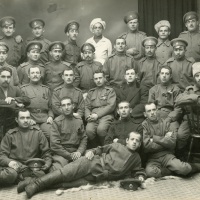
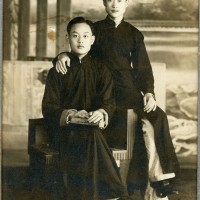
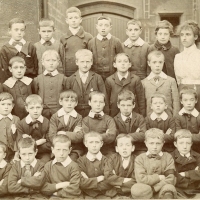

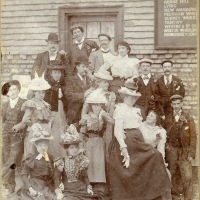
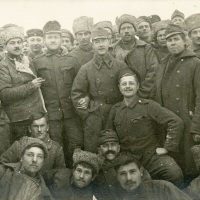
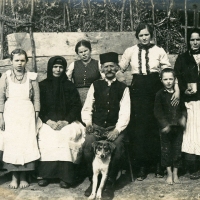
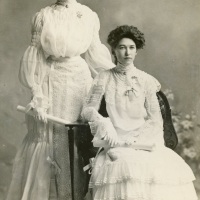
Can’t put my finger on why, but she looks American to me. Nice find!
LikeLiked by 3 people
Interesting! I was thinking she was probably British, because the book was so popular in Britain, but you could well be right. Thanks, CJ!
LikeLiked by 3 people
I think she posed with the book on purpose; to hopefully have others read the book and further the cause of anti-slavery.
LikeLiked by 4 people
I agree. Even if she hadn’t read the book, she would have known what it was about. I don’t think it was a random choice. Happy solstice, Morgaine!
LikeLiked by 3 people
Thank you! Happy Solstice to you as well! 🙂
LikeLiked by 2 people
😊
LikeLiked by 2 people
Could it be the edition published by William Nicholson and Sons?
See https://search.library.wisc.edu/digital/AGCMAQUZNTZXBD85
LikeLiked by 4 people
Terrific sleuthing, Joachim! The top half of the cover (the lettering) looks exactly the same. The bottom half may be slightly different–it’s hard to tell–but Nicholson and Sons may have produced more than one edition. Great work!
LikeLiked by 3 people
Yes, there were problably several editions – I just found another image similar but not identical to the above: https://www.amazon.co.uk/Uncle-Toms-Cabin-Negro-America/dp/B00AVXM1TO
LikeLiked by 3 people
Wow, it may not be exactly the same but it’s so close. It was published in 1889 or earlier, which fits well with the estimated time period of the photo. I wonder why the book was still being published almost 25 years after enslaved Americans gained their freedom?
LikeLiked by 2 people
It does look very close.
LikeLiked by 2 people
I can’t add any insights around the photograph, but I remember reading Uncle Tom’s Cabin and having the same reaction that you did, Brad. As much as it had been vilified, I was surprised to find it well-written and compelling.
LikeLiked by 5 people
I’m glad you said that, Liz. I would read it more critically now than I did 20 years ago. Still, it’s a great historical example of the power of storytelling.
LikeLiked by 3 people
Now that you mention a critical perspective, I think if I were still in college, I would like to dig into the social context for the book and what other communication media played a role in the abolition movement.
LikeLiked by 2 people
The book is blamed for perpetuating certain stereotypes, but I wonder to what extent those stereotypes already existed in the North. Most Northerners had very limited contact with black people or with Southern society in general.
LikeLiked by 1 person
I think she had a good reason to pose with the book. She was conveying a message as important and relevant today as it was at that time.
It’s a very timely and insightful post, Brad.
LikeLiked by 2 people
Thank you so much, Isabelle. Racist views cause people to treat others without empathy, and I think the primary accomplishment of Uncle Tom’s Cabin was to create empathy toward enslaved people, along with a greater understanding of their suffering. The world can always use more empathy.
LikeLiked by 2 people
Can’t agree more, Brad! Read a few books by Toni Morrison. It was immensely sad to witness what people had to go through because of their skin colour.
LikeLiked by 2 people
I think that second link is a match for her book. It does look like a deliberate prop, for sure. That is a book I have not read, but really need to, since I write and research so much about the mid-19th century.
LikeLiked by 2 people
It won’t take you very long to read, and I think you’ll be glad you did. I remember liking it more than I expected to. With so much of our culture being reexamined right now–from statues to Aunt Jemima and Uncle Ben–this might even be a good time to read it.
LikeLiked by 2 people
Indeed.
LikeLiked by 2 people
I never met a black person until I reached college, but I read Uncle Tom’s Cabin in 8th grade. Thinking back, it seems to me it was presented sympathetically: perhaps as a way to introduce us to the possibility that people quite unlike us were living in the world. It also was a way to raise some questions in our young heads about why it was that our sole black postman and his family were living in a nearby city, rather than in our town. I wish I could remember those class discussions; I’m sure they were interesting, if filled with naiveté.
It’s also worth remembering that, however firmly we may reject stereotypes today, those stereotypes emerged because of reality. I’m thinking particularly of a dear friend, now in her 80s, who was raised in Mississippi. Her family was well-to-do, and she had a black ‘mammy’ with whom she was quite close. While the affection between the black woman and my friend was real, there’s no question that they were separated by not only race, but class. The gap may have been small, but it was there, and I suspect one of Stowe’s purposes was to insert her book into that crack, and widen it a bit so that it could be seen for what it was.
LikeLiked by 2 people
The world was very different in 1851. Uncle Tom’s Cabin was a reflection of that world, as least as Stowe saw it and understood it. I’d be curious to know how she felt about the book and whether she saw her characters as realistic. She went to great lengths to defend the novel in the years after it was published, because the backlash against it was very strong.
LikeLiked by 3 people
Great Find. Meaningful post on Juneteenth. Thanks.
LikeLiked by 2 people
Thanks very much! I appreciate your visit and your comments.
LikeLiked by 1 person
Beautifully written and considerable food for thought.
LikeLiked by 2 people
Thanks very much, Rob! I find a lot of interesting photos on eBay in the UK, at very reasonable prices. At least they’re interesting to me. 😄
LikeLiked by 2 people
I don’t think this is a British woman, I think she’s more likely to be American. The clothing and styling is somehow wrong for Britain. The book was certainly popular here, I remember seeing copies of it in the fifties and sixties (probably second-hand) but I’m not sure I’ve ever read it.
LikeLiked by 2 people
Your thoughts on her nationality are interesting, because I had the same reaction. I thought she looked American. About the book, I’m not sure many people read it here these days, but it’s still in print, which says something.
Thanks for stopping by! I don’t think I’ll be posting quite as often going forward, but I’m still researching lots of photos, so I do hope to be posting once or twice a month.
LikeLiked by 3 people
Well fashions for reading matter changes over the years, never more so than in recent years.
I’m not online as much as before, and only posting sporadically to colouring the past. I might, in future, comment via one of my other two blogs as I’m using them a wee bit more often.
LikeLiked by 2 people